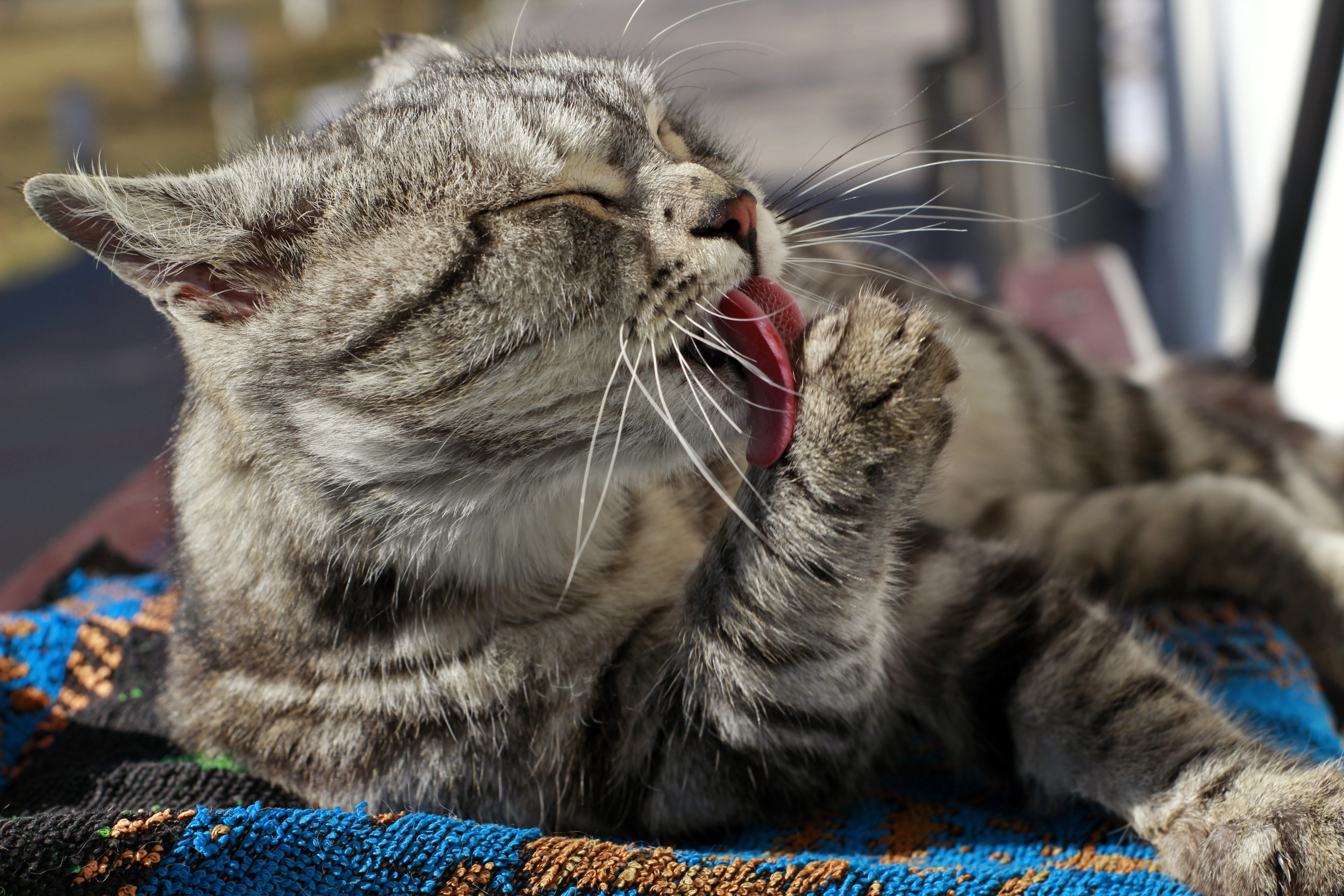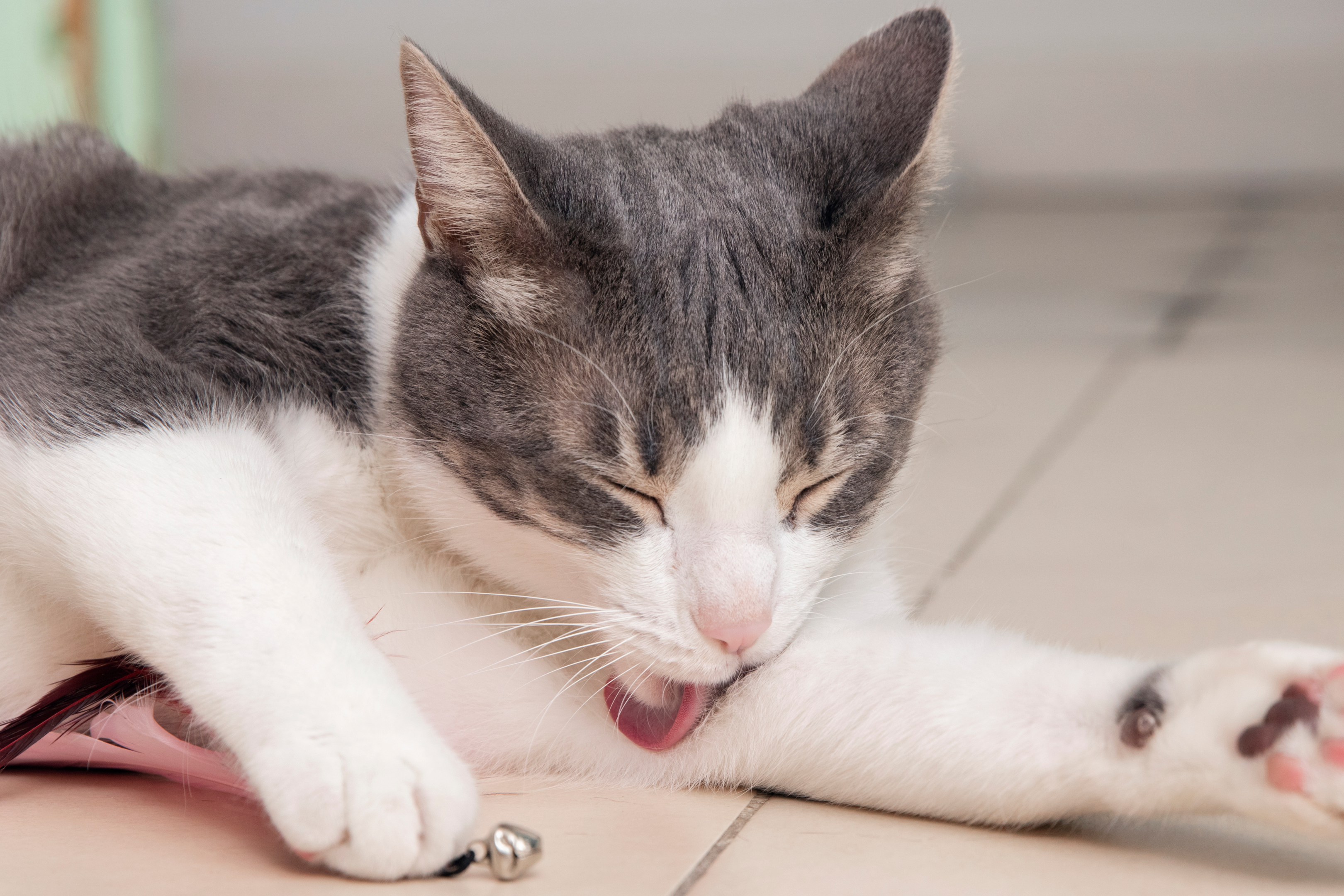
Have you ever seen your feline friend scratching a lot or acting weird? Well, it could be because of fleas. These little bugs are annoying and can make your pet uncomfortable. But don't worry – we've got your back!
In this article, we'll talk about simple signs that can help you tell if your cat has fleas. Understanding these clues will help you keep your furry friend happy and healthy. We'll also cover flea treatment measures you can adapt to prevent fleas from biting your cat too much.
Let's explore the easy ways to find out if those tiny pests are bugging your cat.
Signs of Fleas in Cats
Mostly people assume that since they have indoor cats they won't get fleas. But that's not true. Indoor Cats Get Fleas as well.
You might easily spot skin irritation if your cat is dealing with a serious flea infestation. However, in cases of a mild flea infestation, you might only see slight symptoms. Keep an eye out for these signals:
-
Spotting fleas
The most clear sign that your cat has fleas is, well, the fleas. Those small black or reddish-brown insects crawling on your cat's fur are the actual fleas. If the infestation is significant, you might also spot adult fleas, flea eggs, or flea larvae on your cat or in their bedding.
Please look at your pet's skin by parting their fur in various spots. Fleas tend to gather around the neck, lower back, hind legs, and the base of the tail.
-
Scratching
Fleas can make a cat's skin itchy. If your cat spends a lot of time scratching or biting their skin out of nowhere, it could be a sign of fleas. To help them get rid of this problem, try using special shampoo made for cats with fleas and ticks.
-
Excessive grooming

Cats are known for keeping themselves clean, but when cats with fleas get bitten, their grooming habits go into overdrive, especially in areas like the neck, back of the hind legs, and base of the tail.
Your cat might lick and chew incessantly, attempting to eliminate the uncomfortable itching. Without help, they might groom so much that you begin to notice hair loss, so much so that bald spots may become evident.
-
Avoiding certain areas
Fleas thrive in warm places and often hide in carpets and furniture. If your cat starts avoiding carpeted areas in your home, it could be a sign that fleas are present and your cat is staying away from those areas.
It's important to note that fleas can still be found in the cracks and crevices of wood and tile floors. Regularly vacuum your floors and furniture, including under cushions. Consider natural remedies like diatomaceous earth for carpets. Make sure you wash your cat's bedding frequently in the washing machine and use a pet-safe flea spray on their bedding and furnishings.
-
Behavioral changes
Flea irritation can lead to significant shifts in your cat's behavior. Your cat might start acting unhinged out of the blue, driven to madness by the fleas.
These changes in behavior could involve increased growling, frequent head shaking, aggressive rubbing of their head and body on the floor, or sudden darting from one side of the room to the other. If you observe such behavior, fleas might be the culprit.
-
Anemia
If your cat displays signs of muscle loss, pale gums, and lethargy, it may point towards anemia. This condition can arise when a large number of fleas feed on a cat's blood or when the cat is infected with Mycoplasma haemofelis, a blood-borne parasite transmitted by fleas.
Mycoplasma haemofelis is commonly found in young kittens, senior cats, and those with existing health issues.
If you observe any of these symptoms in your cat, it's crucial to contact your veterinarian without delay.
-
Flea dirt
Another indication of fleas on cats is the presence of flea dirt, which looks like dark brown specks and is basically flea feces. These are commonly found around the neck and rump areas, and you might also notice these flea droppings on your cat's comb or brush.
-
Red spots
If you notice any red spots in your cat's bedding, it could be a sign of fleas. These spots might be fragments of flea dirt that dropped from your cat's fur onto the bedding.
They can transform into red spots when exposed to moisture or the cat's warmth. This transformation occurs because fleas feed on blood. Thus, the feces consist of digested blood.
-
Hair loss
If your cat is excessively scratching and biting due to fleas, it could lead to hair loss, and it could indicate a severe flea infestation.
Another potential cause of skin problems and hair loss in cats is Flea Allergy Dermatitis. Both pets and humans can experience this condition. When fleas feed on blood, their saliva is transferred, and if you or your cat is sensitive to flea saliva, it can trigger an allergic response. This allergic reaction manifests as a rash, often causing pain and itching.
How to Prevent Flea Bites on Cats?
Once you have spotted fleas on your cat, the next step includes preventive measures to stop fleas from biting your cat.
Let's look at some of them:
-
Spot on treatment
Even though they're called "spot-on" medications, they don't just work in one spot like a collar. These drops are good at covering your whole pet for flea treatment.
They spread all over because of oil glands and when your cat grooms itself. They can kill and keep away fleas for a few weeks before you need to put more. They also stop fleas from growing.
Before you pick one, consult your vet and make sure to read the labels to find the right one for your cat's size and age. Only use products made for cats.
-
Oral medication
If you're dealing with fleas that keep coming back, using pills along with spot-on treatments can help. These monthly flea control pills come in small tablets. They don't instantly kill adult fleas but disrupt the flea life cycle.
Best of all, unlike spot-on treatments, you don't have to worry about small kids touching the cat right after giving the pill.
-
Flea shampoo

Giving your cat a bath using a special medicated shampoo that kills fleas and ticks on contact can be a cost-effective but time-consuming cat flea treatment.
However, you'll need to be consistent with this, approximately every two weeks, because the active ingredients in these shampoos don't provide long-lasting protection compared to spot-on or oral medications.
One more thing you can do is use a flea comb for cats after shampoo as part of flea treatments. This will help get rid of the fleas.

-
Flea collars
Another option for flea prevention is using a collar designed to repel and kill fleas in indoor cats. How well it works can depend on how severe the flea infection is.
For the collar to work, it needs to touch your cat's skin so the chemicals can get onto the fur and skin. When putting the collar on your cat, make sure it's snug enough to fit two fingers under. Cut off any extra length to stop your cat from chewing on it. Keep an eye out for signs of discomfort, like too much scratching, which might mean an allergic reaction to the collar.
-
Flea dips
A dip is a strong chemical solution that needs to be diluted and applied to a cat's fur with a sponge or poured over their back. Unlike regular shampoo baths, there's no rinsing afterward. Due to their potency, dips are only recommended for severe flea infestations, and shouldn't be used regularly.
Misuse can lead to toxic reactions in pets and caregivers, so reading and following the labels carefully is crucial. These dips are not suitable for very young animals or pregnant or nursing cats.
-
Powder and sprays
Flea powders and sprays are cost-effective flea products. However, it's important to apply them with caution, as the fine powder or spray can be irritating to the mouth and lungs when inhaled by both animals and humans.
-
Clean your house
Whether your indoor cat has a few fleas or many, you need to clean your home thoroughly. Do this every day until the flea problem gets better. Use a vacuum in all the corners and along the edges of the floors. Throw away the vacuum bag when you're done.
Wash your cat's bedding and toys with warm, soapy water. Remember to clean your car, too, even if your cat doesn't go in it. Fleas can still be on your shoes or pants and start a flea home in your car.
Final Words
Being aware of the signs and symptoms of a flea infestation in your cat is a crucial step towards getting them help. From excessive scratching and grooming to the presence of tiny black or reddish-brown insects, recognizing these symptoms early on can help you take prompt action.
Whether it's through preventive measures like spot-on treatments, oral medications, collars, or more intensive solutions like dips, it's important to choose the right method for your cat's needs.
Additionally, maintaining a clean environment by regularly cleaning your home and your cat's belongings is extremely important in preventing and managing flea problems.
If you have reason to believe your cat has fleas, seek guidance from your veterinarian so that they can assess the situation and get your help accordingly.
FAQs
Can fleas from cats live in human hair?
While fleas can land in human hair, they won't stick around or establish a home there. Human hair isn't dense enough to offer a suitable hiding place for fleas, and most flea species do not feed on humans.
If a flea happens to hop onto you from your pets, it is likely to move on to other pets quickly in search of a more suitable environment for another host.
Where can fleas be located on your cat's body?
Fleas on your cat are commonly found in humid areas, such as around their groin, in their armpits, behind their neck, shoulders, and legs, as well as around the base of their tail.
















